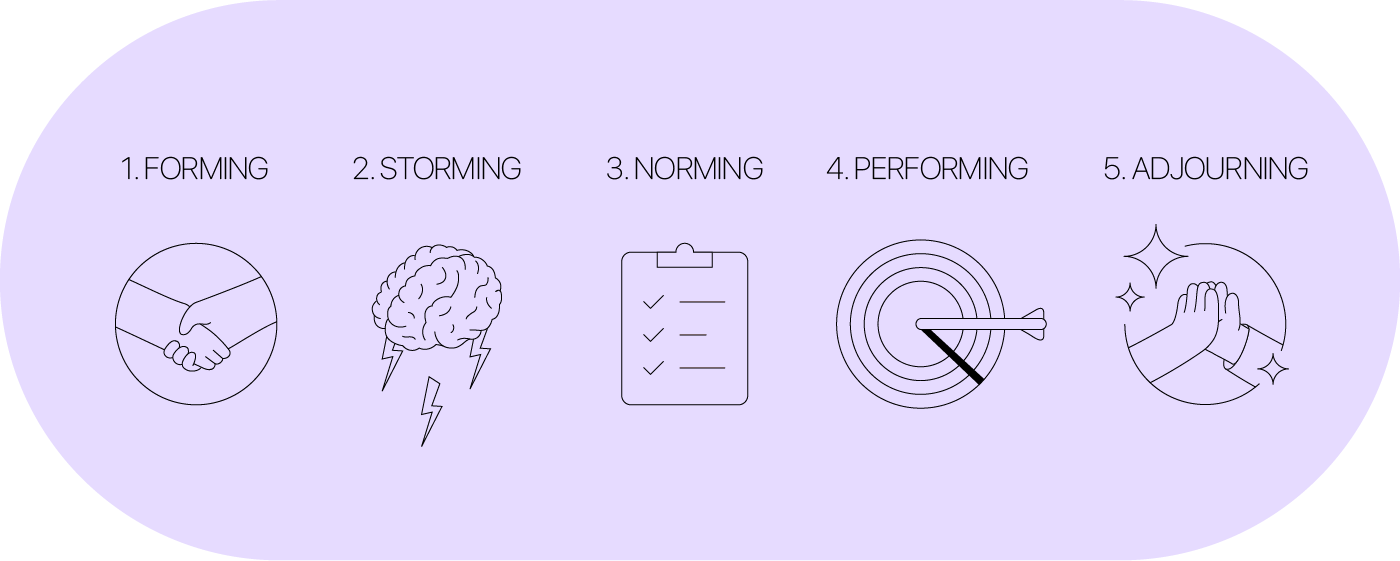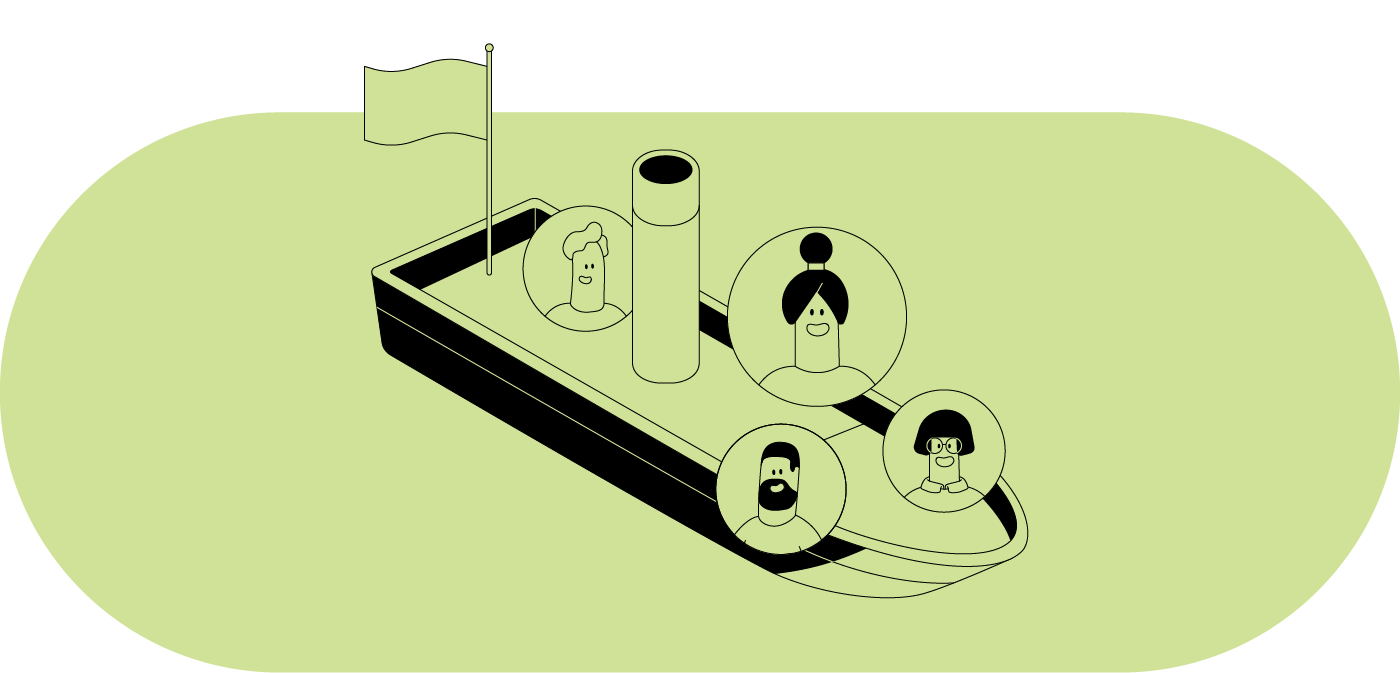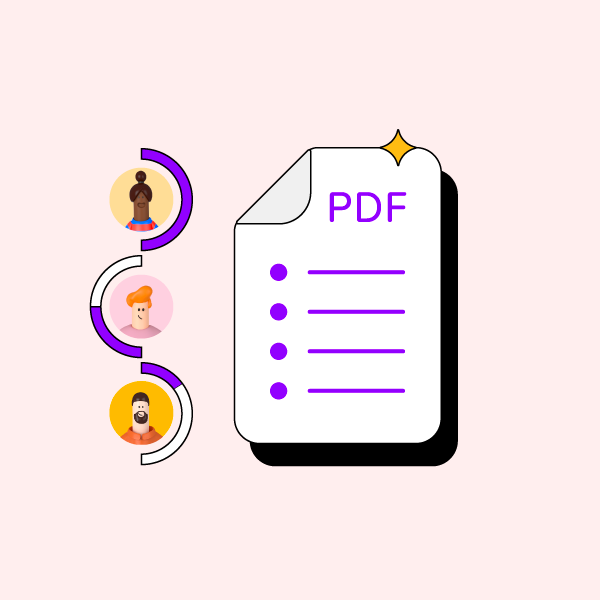The success of an organization strongly depends on the unity of its members. However, in the last couple of years, teamwork has been hit. First, we faced the pandemic, then economic tensions and inflation threatened the existence of our companies, and now many team leaders and managers are struggling to manage remote work, which increased from the pandemic.
But how can our teams stay efficient and grow in such a turbulent environment? Committing to team development is something you should consider. Team development is one of the few things that can help your business thrive.
This article will provide an overview of team development stages and strategies for effectively managing each stage.
Definition of Team Development
Team development is the process that boosts team dynamics, communication, and collaboration to achieve greater overall effectiveness, productivity, and synergy. It involves identifying team members' strengths and weaknesses, encouraging communication and collaboration, improving trust, developing skills and knowledge, and boosting teamwork.

The ultimate goal of team development is to create a high-performing team that can work together efficiently and effectively toward accomplishing common goals. It also involves creating a positive and supportive work environment that fosters healthy relationships, constructive feedback, and ongoing learning and improvement. In short, team development is about nurturing and cultivating the growth of a team to achieve its full potential and deliver the best performance.
Forming Stage
The forming stage is the initial stage of team development, where team members get acquainted, and roles and responsibilities are established. Team members are often cheerful and polite during this stage, and many will hide underlying concerns or tensions. Characteristics of the forming stage include low productivity, lack of trust, and uncertainty about goals and expectations.
Challenges that may arise during this stage include difficulty establishing clear roles and responsibilities, communication breakdowns, and differing opinions or personalities. Strategies to facilitate the forming stage include:
- Setting team goals and expectations
- Creating team norms
- Establishing clear roles and responsibilities
- Promoting open communication and trust-building activities
Overall, the forming stage sets the foundation for team collaboration and sets the tone for future team development stages.
Storming Stage
During the storming stage of team development, team members establish their roles, express their opinions and ideas, and anticipate and react to potential conflicts within the group. At this point, individual personalities and styles clash as they compete for influence and status.
It is also characterized by power struggles, disagreement, and frustration as members try to negotiate and establish common goals, norms, and values. To successfully manage the storming stage, team members must learn to communicate effectively, listen actively and constructively, and work collaboratively to resolve conflicts, build trust, and foster a sense of unity and purpose.
Norming Stage
The norming stage in team development follows the storming stage, and team members finally resolve conflicts, while there is an emergence of trust, cohesion, and a shared sense of purpose among team members.
During this stage, members accept each other's differences and develop group norms and values that facilitate communication, collaboration, and decision-making. They also establish clear roles, responsibilities, and expectations and work more effectively as a cohesive unit toward their common goals.
Performing Stage
When team members hit the performing stage, they can achieve a high level of trust and cohesion between team members. At this point, teams are at the peak of their performance and receive less oversight from their team leader.
While issues may arise, teams have developed strategies for resolving problems without compromising progress or timeline.
Adjourning Stage
This final stage is the right time to step back and see what you have accomplished. Teams can review the last few months and celebrate their success. On the other hand, they can take an honest look and check what went wrong and if there is room for improvement.
At the end of the project, you should schedule an online meeting where your team can freely discuss the entire project. Ask them to come prepared with examples of what worked and what didn't.
Importance of Understanding Team Development for Successful Teamwork
Here are a couple of things that will highlight the importance of team development. Make sure to check out our other article that explains the characteristics of effective teamwork.
- Builds trust: This is a crucial element of an effective team. For team members to work together, they need to be able to trust each other. Trust also makes employees feel safe and helps them establish their strengths and recognize their weaknesses.
- Better communication: When employees collaborate, they strategize how to deal with tasks and deliver results. Team members can divide tasks and work in small groups, where they will share ideas and complete their work successfully. Communication through different channels allows team members to understand their roles and coworkers' actions.
- Builds a motivated and engaged team: This helps your team pursue common goals and succeed.
- Create a healthy teamwork culture: A workplace with a healthy teamwork culture will foster authentic engagement, which is crucial for achieving better results and boosting employee loyalty.
Recommended Tools for Team Development
Several tools can help promote team development and improve collaboration and communication among team members. Some of the most popular ones include:
Project Management Software
Project management software like ActiveCollab lets teams collaborate closely and manage projects without a fuss. When large projects are sliced up into smaller tasks, it's much easier to track who's working on what and how's it progressing. Team members can communicate through comments on tasks, share files, and discuss any doubts. The in-app Chat feature lets them stay within one platform and quickly exchange information.
Team-building Activities
Whether your team works remotely or in a crowded office, team-building activities can help you maintain team unity and bring everyone together. One of the most powerful reasons for team building is to get results.
Teams can build skills like conflict resolution, communication, planning, and problem-solving through a series of planned and fun events. Through team-building activities, you can foster genuine connections and deeper discussions.

Conflict Resolution Tools
Conflict resolution tools are a crucial part of team development, and several approaches must be considered. For example, mediation, collaborative problem-solving, active listening, role-playing, and brainstorming are only some of the things that can contribute to conflict resolution.
Personality Assessments
Personality assessments can be helpful tools for individuals and teams to gain a better understanding of themselves and others. Here are a few popular personality assessments. You can employ tests like Myers-Briggs Type Indicator, DiSC Assessment, Big Five Personality Traits, and Enneagram.
Feedback Tools
Giving and receiving feedback is an important part of team development. Tools like 15Five, Lattice, and Culture Amp can help facilitate regular check-ins and provide insights into team member performance and engagement.
Continuous Learning and Development
Continuous learning and development are crucial not only for individual growth but also for team development. Therefore, you should set clear expectations, encourage cross-training, provide opportunities for training, celebrate your accomplishments, foster a growth mindset, send your employees to workshops and conferences, engage in mentoring and coaching, and establish personal development plans.




